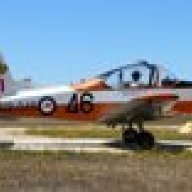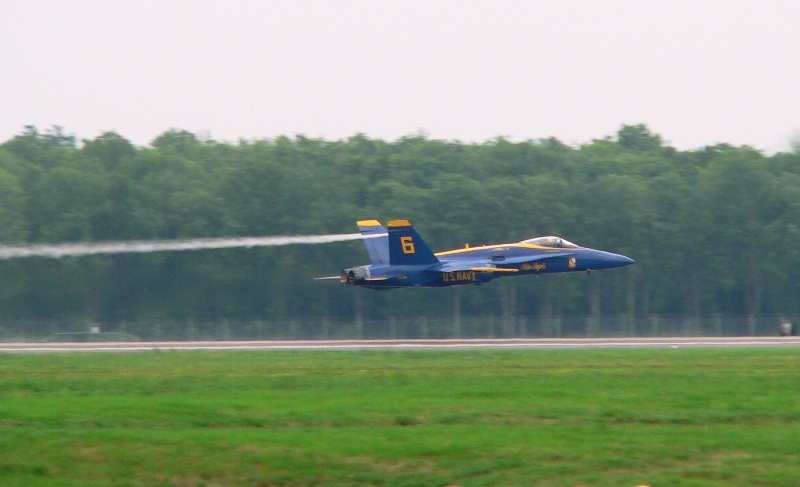-
Posts
624 -
Joined
-
Last visited
Content Type
Profiles
Forums
Gallery
Downloads
Blogs
Events
Store
Aircraft
Resources
Tutorials
Articles
Classifieds
Movies
Books
Community Map
Quizzes
Videos Directory
Posts posted by Matt
-
-
Here's a few from early morning on Australia Day, a Stearman & 2 x Yak52 formation flyover to kick off the Australia Day ceremony at Echuca.
-
Hi Kaz,
Another option is Di at Punkin Head Airsports at Yarrawonga, she's made covers and bungs for both our Sportstar and the CT4 and does and awesome job at very competitive prices.
-
G'day Ross, pretty sure Deni is still there, Bendigo definitely is. Where you off to this weekend?
-
Another thing (non lens) to consider are the arms of the glasses. Many glasses have arms that don't sit flush against your head and create a gap which some/many headsets can't seal and thus reduce the noise reduction aspect (active and/or passive). This may also to create pressure on your skull as the headset clamping action pushes the arms of the glasses against your head potentially causing headaches and general discomfort.
My personal choice is the Oakly Crosshair (non-polarised) as the arms on these are shaped perfectly for use with headsets Oakley CROSSHAIR Sunglasses available online at Oakley.com
-
Which purchase are you referring to Yenn, buying the Antonov or the NH-90? Australia has already purchased and is buildling the NH-90 for the Army (and already delivered the first couple), the "Naval" version of the NH-90 is likely to be purchased to replace the Seahawk...to maintain the same "common platform" approach taken previously with Blackhawk/Seahawk. Australia has also purchased the French Tiger attack chopper and Airbus A330 refueller amongst other non-US purchases.
-
Not a RAAF pilot but spent a bit of time in the RAAF and went through the pilot selection process - both Direct Entry and again while I was in the RAAF. Also have quite a few friends who are current or ex RAAF aircrew.
All the info you need is on the Defence Jobs website Pilot | Defence Jobs The two paths for "off the street" entrants are Non-Graduate/Direct Entry or via ADFA. The education requirements for both are the same - Year 12 with maths/science priority. The difference between the two - one gets you flying effectively immediately (after officer training), the other gets you flying in 3 years after completing a degree.
If I was going to go through the process again (and they came up with a way to resolve colour perception issues!), I'd apply for both ADFA and Direct Entry towards the end of Year 12 - this gives you a bet each way.
A few things to remember going down the Defence path - you need to sign up for 12 years (not a big deal at 18 but something to be mindful of), the focus of military aircrew is less on being a pilot and flying an aeroplane and more on operating a mission platform and completing a mission. Know what you want to fly and why - this is critical if you want to fly fast jets - if fast jets is what you want, make this your life's mission as I doubt there is anything in life as competitive as getting a fast jet seat. Also, as a military pilot you're an Officer and military leader first, pilot second. This is even more so for the Army and Navy where you're a soldier/sailor first. Oh, and these days you don't apply to be an Air Force pilot, you apply to be a Defence Pilot, you state a preference for the service you wish to end up in but the ultimate decision is Defence's - they'll put you where they need you.
Hope that helps some.
-
I agree Sarge, it was an awesome day...and how rude of us not to bump into each other and say G'day!
-
There's a "rumour" that Temora Aviation Museum may get one and keep flying in a similar relationship with the RAAF Museum that they have with the Sabre. Also a rumour that HARS may get one and also keep flying. It would be a shame if there wasn't at least one of these unique and historic aircraft kept in airworthy condition.
-
28 degrees, airfield with high airfield elevation (1840') and a fully loaded Cherokee which aren't known for their climb performance...always going to be a challenge.
-
-
G'day Scott...as a lover of vintage and classic aeroplanes, are you also a member of our association?I love vintage and classic aircraftSame question goes to any other antique/vintage/classic aeroplane lovers out there.
If you've not heard of us, check us out at Home - Antique Aeroplane Association of Australia
-
Hi Geoff,
In relation to your last question - if/when the airspace becomes controlled i.e. Class C or D, the requirements are for pilots to have the relevant qualifications (PPL minimum) and aircraft that meets requirements to operate in controlled airspace. I doubt there would be any "leave passes" or exemptions. It would be a case of get the necessary qualifications or find yourself a new airfield to operate from.
I imagine this is one of the challenges that the folks at Camden are currently facing
under the proposed Class D implementation which (as I understand) be daylight hours every day in contrast to the current GAAP on weekends.
Oh, and on the CAGRS part, CAGRS is an information service only, a CAGRS operator can't direct traffic like an air traffic controller in controlled airspace...fundamentally the same as a UNICOM service.
-
G'day Chrisso,Hey Matt, I recognise the hat - ARDU. I was at 492SQN from1991 to 1997 on the P3's.Yep, ARDU hat...goes with the ARDU tail flash on our CT4. Our CT4 spent its whole service life at ARDU, only CT4 not to serve with 1FTS or CFS. I'm also ex-RAAF, no time at ARDU though, was a CISCON and spent most of my life (95-00) at Laverton.
Thanks all for comments, am working on a few other videos at moment, will post when done.
-
Another question with no right or wrong answer...or hard and fast rules. Also whether you're talking strobes or beacons as they differ. From what I've seen (and do), beacons on prior to engine start and switch the strobes on as part of their ready checks - strobes can be very distracting in close proximity on the ground due to their brightness - generally only an issue for night ops. If you only have strobes, I'd use them as you were initially taught - prior to engine start to indicate the aircraft is "live"...so to speak.
-
I haven't figured out how you convinced Kaz to strap to the cowl and hold the camera. She's a good woman.
 she is very supportive like that
she is very supportive like thatAnd the looks between manoeuvres are to airspeed, altimeter and G meter...and to the sequence list...there is a little bit of planning in the sequence, working on a few different ones at the moment.
-
Thanks, appreciate the feedback. Was a perfect evening, low 20's, no wind to speak of...had a few of those lately. Video not as "flashy" as some of the others I've done, wanted to keep it simple...probably should've had some "out the front" footage instead of looking at my boofhead the whole time....oh well, next time.
-
-
Another option for RA-Aus is to become an agent itself. Our association (Antique Aeroplane Association) is an agent for QBE and as part of that relationship we get some benefits from QBE such as sponsoring and arranging safety seminars, event sponsorship etc. The association makes a small commission on policies sold.
-
Suggest your local SAAA chapter SAAA - We are the Builders of AUSTRALIAN EXPERIMENTAL AIRCRAFT would be a good place to go as well.
-
Yep, Manfrotto Magic Arm is a great bit of kit, borrowed one from a photographer mate of mine for a while, a bit more expensive than the basic G-Clamp style but many more uses.
The lens I use is a Raynox QC-303, it's a snap-on adapter for video cameras.
-
I use a g-clamp style mount which is good for attaching to tubing / dash board. Can't find the actual one I bought but this is a similar one: Item Details
These provide a very stable platform even under load...as you can see from my various aerobatics videos at YouTube - ARDUCT4's Channel
Will try to find the actual one I bought as it was only 10 bucks.
Oh - and you probably want to invest in a wide angle lens to ensure you capture a wide field of view...you can get clip on ones for video cameras for about 50 bucks. Will find the link to those and post it too.
-
Apparently the US never used the dump & burn at public displays and according to folks in the know, rarely ever used the "& burn" part, only using the dump aspect as it was designed - to dump a lot of fuel quickly. Saw this a few times at Tindal when Pig's had technical issues after takeoff and needed to land quickly, to get under MLW they'd circle the base dumping fuel.
The Hornet has dump vents at the top of each fin...not quite close enough to the engines for the dump and burn trick though.
-
Santa arriving in style at the Echuca Aeroclub Christmas Party
-
Having operated out of Canberra for 3 years we would regularly go up to 8500/9500 when going out to the coast or across the great divide to the west. Also on trips across to Tassie, 9500 was the usual height for that trip.




One winged F15 landing!!!! - no joke!
in Aviation Videos
Posted
Great story...the "footage" of the fuel streaming out of the damaged aircraft is fake...the rest of the footage is a hotch potch of aerial footage from about 15 different aircraft...still a great story though.